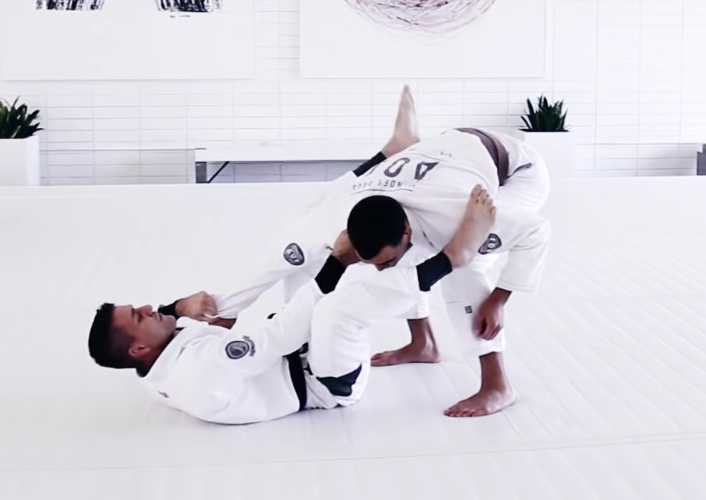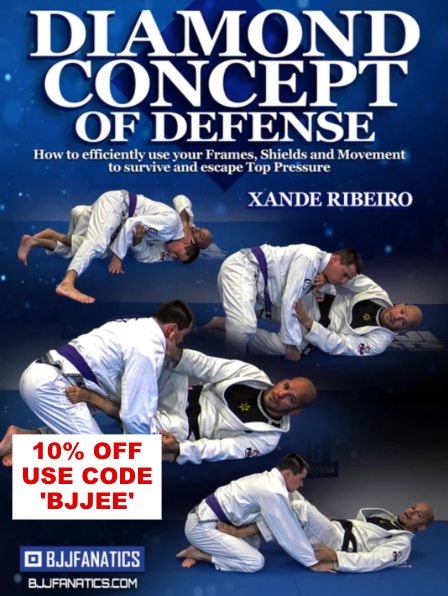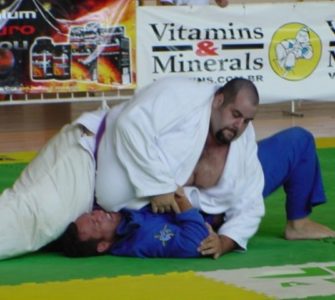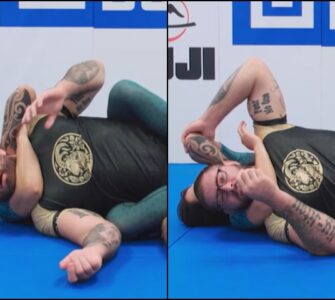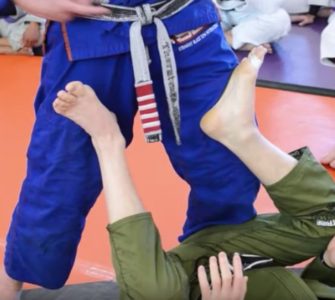In the part one of the Introduction to the Collar Sleeve Guard, we’ve examined the basics of setting up this guard, as well as how to set up basic attacks from it.
Now, in this second part, we’ll take a look at a Rafael Mendes’s demonstration – which focuses on the concept of posture and on defending once you’re stuck in the Collar Sleeve Guard yourself.
COLLAR SLEEVE GUARD: BENEFITS AND PULL!
Rafael points out that, when you have the Collar Sleeve Guard, it is very important to pull your opponent’s collar and sleeve.
Sure, he explains, just getting the grips and then getting used to controlling your training partner is alright at the very beginning. However, the goal when attacking shouldn’t be to just control your opponent; but to submit them.
For that reason, it is very important that you focus on pulling your opponent’s collar and sleeve, as this will break their posture down; and give you opportunities to set them up for a Triangle, Omoplata, Armbar, sweeps… So, one sure-fire way of knowing if you’re actively pulling them or not is to pay attention if your arms are extended too much, as Rafael demonstrates. If they are, then you’re not pulling; if you have a bend in your elbows and can, well, feel the tension – then you’re doing it well.
Also, Rafael explains that this will not only get you better in the Collar Sleeve Guard, but in all other guards as well. As a matter of fact, that’s why he emphasizes training the Collar Sleeve Guard so much; his students get to understand how to control the distance between themselves and their opponents better because of it. So, it translates into being better in all other guards, as well as into many transition possibilities.
HOW TO DEFEND THE COLLAR SLEEVE GUARD?
Rafael emphasizes that, when on the receiving end of the Collar Sleeve Guard, the most important thing is to keep your posture up. Sure, defending from this position isn’t easy and doesn’t feel good at all; but if you want to have a better chance of escaping it, then you have to try and keep your opponent away from breaking your posture.
This means, Rafael shows, that you have to keep your head up, your hips low and that you have to hide your elbow to the inside. If you manage to do this and if your balance is good, then Rafael demonstrates that you can shift your weight to one leg, which is on the same side as their grips. Then, use your other leg to press into their leg – one they’re posting on your bicep or shoulder – pushing it to the floor. Grab it on the inside and push it down, in order to step over it and then initiate the pass.
On the other hand, if they’ve broken your posture down and exposed your elbow, Rafael points out that you shouldn’t worry about passing your opponent’s guard nor about being swept; instead, you need to prevent getting submitted!
There are two ways to do this: sitting back down to the floor with one knee up (never have both knees down) and then leaning back in order to stave off armbars and other submissions. Or, a more offense-oriented way; grab their pants and step onto their hip, falling back (almost as if you’re pulling guard). Then, break their grip, lift your hips and leg drag their leg, standing up and proceeding to pass from there.
Watch Rafael Mendes explain the Collar Sleeve Guard and how to defend it, in detail, on the video below:
Stay safe and always keep your guard with the Collar Sleeve Guard: Xande Ribeiro’s revolutionary diamond concept of defense.
- Learn Xande’s diamond concept that lets him defend, escape, and reguard against the best in the world.
- Take away the pressure and get back to guard with these keys to Xande’s defensive system.
- Everyone from beginners to black belts can learn from Xande’s methodical system of escaping some of the worst positions in all of BJJ.

